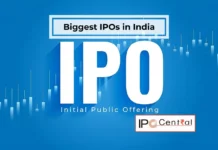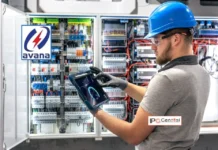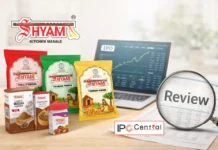India’s largest homegrown fragrance and flavor maker, SH Kelkar & Company will hit the market with its initial public offering (IPO) on 28 October. The issue is priced at INR173-180 per share and comprises of fresh issue (INR2.1 billion) and an offer for sale (16.56 million shares). In total, the IPO is likely to mobilize up to INR5.08 billion at the upper end of the price band. Promoted by Ramesh Vinayak Vaze, Prabha Ramesh Vaze and Kedar Ramesh Vaze, this Mumbai-based company will see its shares listed on the BSE and the NSE post the IPO. The public issue is being managed by JM Financial Institutional Securities Limited and Kotak Mahindra Capital Company Limited.
Issue Details
| IPO dates | 28-30 October 2015 |
| Price Band | INR173-180 per share |
| Issue Size | INR4.96 – 5.08 billion |
| Fresh Issue | INR2.1 billion |
| Offer for Sale | 16,565,161 shares |
| Minimum Bid | 80 shares |
| Minimum Investment | INR13,840 |
Included among the selling shareholders are private equity major Blackstone and one of the promoter Prabha Ramesh Vaze. Blackstone Capital Partners plans to offer 13,141,000 equity shares while 86,575 shares will be sold by Blackstone Family Investment. Prabha Ramesh Vaze plans to offload up to 3.34 million shares out of 8.35 million shares she holds in the company. Blackstone had invested in the company in 2012 and remains the biggest shareholder with 44.24 million shares or 33.3% equity stake. In the latest conversion of preference shares to equity shares, Blackstone’s average acquisition cost was INR333.13 per share. However, the private equity major had shares allotted at lower prices separately.
Read Also: InterGlobe Aviation IPO Review: The emperor has no clothes
Usage of Proceeds
SH Kelkar intends to use the proceeds for repayment/pre-payment of loans, investment in subsidiary and repayment of loans availed by it and for general corporate purpose. As on June 2015, the company had a debt balance of INR2.01 billion and routing issue proceeds will help immensely in bringing down interest expenses. The company targets to grow its market share in domestic market and expand its international business.
| Usage of Proceeds | |
| INR1.26 billion | Repayment/pre-payment in full or in part of certain loans availed by SH Kelkar. |
| INR320 million | Investment in wholly owned subsidiary K.V. Arochem Private Limited and repayment/pre-payment in full or in part of certain loans availed by KVA. |
Market share and customers
S H Kelkar’s primary competitors include fragrance and flavour companies such as Givaudan, Symrise and Firmenich. In its red herring prospectus (RHP), the company claims to be one of the largest players in India by revenue, with a market share of approximately 12% for the year ended 31 December 2013. Their 3,700-customer base of large multi-national companies and local manufacturers includes beverage manufacturers, dairy products, bakery products, confectionery, oral hygiene products and pharmaceuticals.
 Customers are categorized into three categories: global customers, national customers and blenders of fragrance and flavour. Marico Limited, Wipro Consumer Care and Lighting Limited, Godrej Consumer Products Limited, VINI Cosmetics Private Limited, J.K. Helen Curtis Limited and Hindustan Unilever Limited are counted among S H Kelkar’s customers. Worth highlighting is that fact that S H Kelkar has a well-diversified set of customers and no customer accounts for more than 5% of its annual revenues. The company has three manufacturing facilities in India and one in Netherlands.
Customers are categorized into three categories: global customers, national customers and blenders of fragrance and flavour. Marico Limited, Wipro Consumer Care and Lighting Limited, Godrej Consumer Products Limited, VINI Cosmetics Private Limited, J.K. Helen Curtis Limited and Hindustan Unilever Limited are counted among S H Kelkar’s customers. Worth highlighting is that fact that S H Kelkar has a well-diversified set of customers and no customer accounts for more than 5% of its annual revenues. The company has three manufacturing facilities in India and one in Netherlands.
Read Also: HPPL Holdings eyes INR32 billion IPO: Blackstone plans partial exit
Company Financials
For the financial year 2015, S H Kelkar’s consolidated net profit dipped to INR643.81 million from INR791.16 million in FY 2014. The company created, manufactured and supplied over 8,000 fragrances, including fragrance ingredients and flavours to its customers in current FY. This was despite an 11.8% jump in total income to INR8.6 billion. As a result, the company’s net margin slipped to 7.5% in FY 2015, down from 10.3% in FY 2014. This is the lowest margin for the company in three years. This is not a positive development by any standard but the consolation here is the constantly growing top line.
| S H Kelkar’s consolidated financial performance (in INR million) | |||||
| FY 2011 | FY 2012 | FY 2013 | FY 2014 | FY 2015 | |
| Total income | 4,669.50 | 5,739.66 | 6,677.05 | 7,691.69 | 8,603.31 |
| Profit/(loss) before tax | 465.15 | 632.99 | 782.34 | 1,085.42 | 947.36 |
| Net profit/(loss) after tax | 314.81 | 411.91 | 615.74 | 791.16 | 643.81 |
Should you invest?
S H Kelkar has no listed peers which makes it slightly difficult to compare if the IPO is priced sensibly. Taking the simple measure of price by earnings (PE) ratio, the stock looks expensive based on FY 2015 PE ratio of 37.2. However, this comes down to a more reasonable level of 30.2 on the basis of 2014 earnings. Since FY 2015 was an exception in terms of earnings, we can expect the company to come back to its double-digit margins in the current FY. Looking more closely, S H Kelkar’s first quarter performance has demonstrated that it is recovering. The recovery should gather pace going forward as top line continues to grow and interest outgo declines. Despite a diversified clientele, S H Kelkar’s fortunes are largely linked to FMCG space, although there is no reason to take it negatively as solid FMCG plays have been consistent performers.
There is quite a lot in terms of past performance to warrant this optimism and last year’s aberration has actually created headroom for margin expansion. This combination puts it in diametrically opposite to InterGlobe Aviation which has everything going in its favour right now and thus, has been steeply priced.
Overall, S H Kelkar’s valuations are not cheap but not excessively stretched either. Since the market has rewarded high performers this year even with excessive valuations in the case of Manpasand Beverages, there appears to be is a strong case to apply in SH Kelkar IPO for listing gains as well as for long term investment.







































This appears a good analysis, However I would like to suggest you to include total equity base of the company before and after the offer. This helps us in deciding what may be likely eps in coming years at different growth rate. Sort of mental sensitivity analysis. An indication of existing debt will also add completeness to your report.Regards